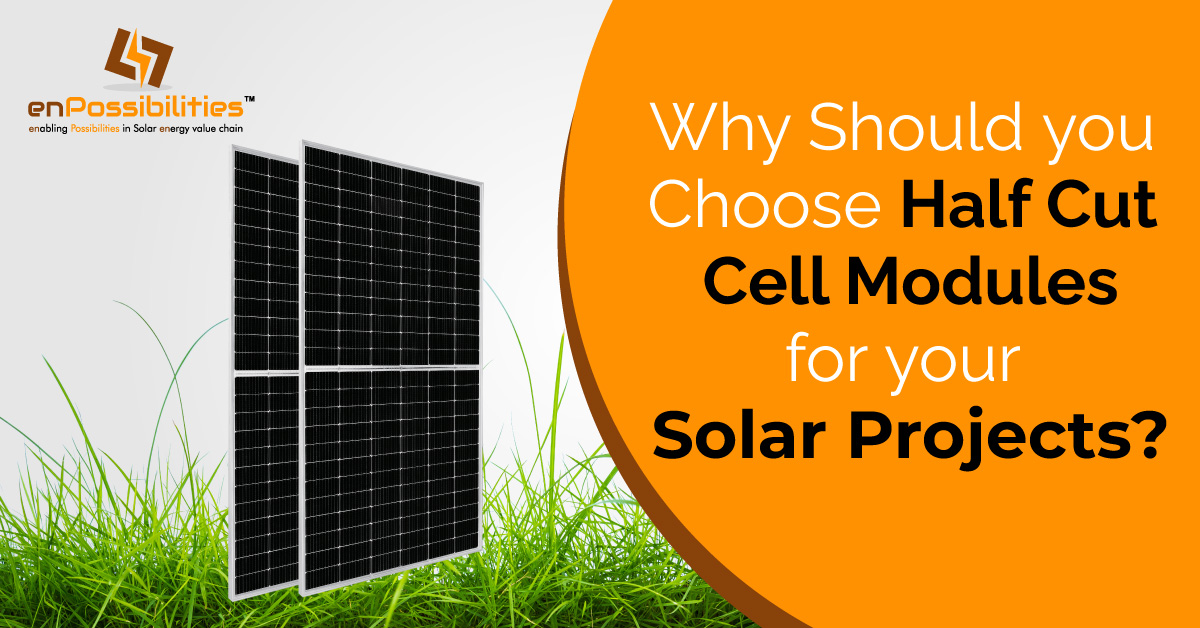Traditional crystalline silicon solar cells can now be made in a new and better way using half-cut solar cell technology. This promising technology reduces some essential power losses in standard PV modules. This improves the performance of both the solar panels and the PV system.
Half-cut solar cells have a lot of great benefits compared to standard modules. They don’t have any significant drawbacks. This article will discuss how half-cut solar cell technology works and its benefits.
What’s that?
Traditional solar cells have been cut in half with a laser cutter to make half-cell solar panels. A standard module has 60 or 72 cells, but a half-cell module has 120 or 144 cells, which is twice as many as a standard module. It’s the same size as a regular cell module, but the cells are only half as long. By doubling the number of cells, technology makes it possible to get more energy from the sun and send it to the inverter.
How do solar cells that are half-cut work?
Cutting the size of solar cells in half allows for a greater density of cells on a panel, which is the goal of half-cut solar cell technology. This makes solar panels produce more energy. The panel is then cut in half so the top can work separately from the bottom. This means more energy is made, even if half of the panel is in the shade.
That’s the big picture. Below, we’ll break down the steps.
Traditional monocrystalline solar panels usually have 60 to 72 solar cells, so when those cells are cut in half, the number of cells goes up. Most half-cut panels are made with PERC technology, making the modules more efficient, with 120 to 144 cells.
A laser is used to cut the cells in half in a prudent way. The amount of current flowing through them is cut in half by cutting these cells in half. This means that the resistance to the flow of energy through the current is reduced, which leads to better performance.
Since the solar cells are cut in half, they are smaller, and there are more on the panel than on a normal panel. The panel is then cut in half so that the top and bottom parts work as two separate panels and still make energy even when one half is in the shade.
Modifying the “series wiring” of the panel, the method by which solar cells are connected and transmit electricity through a bypass diode is essential to the success of half-cut cell design. The red line in the images below shows where the bypass diode takes the electricity from the cells to the junction box.
In a traditional panel, if one cell is shaded or broken and can’t process energy, the whole row will stop making power because it is wired in series.
Half-cell solar modules have their good points
Putting these cells in photovoltaic solar panels can make them produce more solar energy. A half-cut solar module has many advantages over traditional solar panels.
Reduced hot spots and overall temperature
When only some sun shines on solar panels, it causes hot spots. When some cells are in the shade, they stop producing power and act as resistances, using electricity and increasing the cell temperature. Limiting the current flow through each substring, the solar cells help keep localized areas from getting too hot.
When a PV module is partly shaded, both the module and the array lose a lot of power. Half-cut solar cells have twice as many substrings, so shading a single panel area will cause less energy to be lost. The loss of energy from a solar array made up of panels with one-half cutaway has been shown in studies to be as low as 50%.
Reduced hot spots and overall temperature
When only some sun shines on solar panels, it causes hot spots. When some cells are in the shade, they stop producing power and act as resistances, using electricity and increasing the cell temperature. Cutting solar cells in half reduces the current per substring and thus cools localized hotspots. Up to 20 degrees Celsius can be removed from the peak temperature of hot spots with this technology.
Higher power from cell to module
A solar cell’s conversion efficiency can vary widely between different technologies, even among identical cells. However, half-cut solar cells have a higher Cell-to-Module power (CTM), producing more energy. For comparison, the CTM power of conventional PV modules is only 94.8%. In contrast, the CTM power of half-cut solar cells is 99.4% (before laser-cut losses are considered) and 98.4% (after losses are considered).
Integration with different types of solar cells
The traditional c-Si technology is still used to make solar cells, but the half-cut solar cell technology changes how PV modules are completed. Because of this, these solar panels can be made with PERC and bifacial technologies. This can lead to PV modules with less power loss, a higher power output, and other benefits.
Conclusion
When making half-cut cells is more streamlined and easier to use, they will become cheaper and more common. Inquire with your solar contractor about using partial cells in your rooftop installation.

